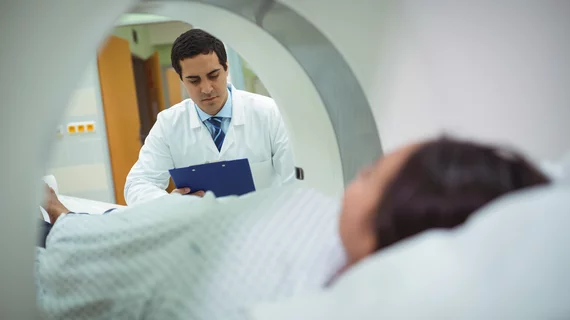How Massachusetts General increased outpatient MRI time slot capacity by 50%
Massachusetts General Hospital has increased outpatient MRI time slot capacity by 50% with a few simple interventions, according to new research published in the Journal of the American College of Radiology [1].
Magnetic resonance imaging volumes nearly doubled between 2000 to 2016 in the U.S., with an annual growth rate reaching as high as 8%. But with many fixed aspects of the exam process, some providers have struggled to adjust to this reality, experts at the Boston-based institution noted.
To respond, Mass General launched a three-year process in 2019 to begin building a standalone outpatient MRI facility utilizing new designs and processes to serve more patients. Fast forward to the present and the endeavor is paying off. Imaging times for the 10 most performed exams dropped by between 20% and 46% with the new setup. Patient prep times also have dropped considerably, among other gains.
“Minimizing MR protocol length while preserving diagnostic quality has been a key strategy to increase capacity,” Min Lang, MD, a resident with the Department of Radiology at Mass General, and co-authors wrote June 20. “We targeted optimization of gradient time for the 10 most performed MRI examinations for neurological body, and musculoskeletal imaging at the new imaging facility.”
To develop the new center, researchers observed MRI workflows at other established outpatient imaging facilities. They pinpointed the most time-consuming processes and biggest bottlenecks, landing on prep times, table turnover and MR scanning duration.
The newly built facility incorporated three scanners along with four patient preparation bays, which were separated by a nine-foot corridor. Patient preparation remained the same, except that all steps were now performed in the bay (rather than some occurring in the scanner room), including positioning, coil placement and education. Each scanner also now has two corresponding dockable tables used interchangeably, enabling staffers to get patients ready while another exam is still in process.
“Integrating these features into existing facilities may not be feasible unless space is available,” the authors noted. “However, these fundamental architectural and design elements should be considered when developing new imaging facilities to maximize volume throughput, reduce scanner downtime and improve patient experience.”
One wrinkle: The new facility requires slightly higher staffing ratios, with scanners staffed by two technologists and one-third of a tech aide. Each of the latter helps across all three MRI machines as needed. In contrast, other facilities utilize two techs per machine without the additional aide.
Following the intervention, prostate MR exams saw the biggest decrease in scan times, dropping from 46 minutes to 25 (-46%). In neuroradiology, MR of the brain with contrast fell from 31 minutes to 18 (-42%). And in musculoskeletal care, shoulder MRI without contrast experienced the largest change, decreasing 35% from 26 minutes to 17.
At facilities using the old setup, 96% of all table turnover times were greater than 3 minutes. About 43% ranged between that duration up to 9 minutes. Meanwhile, at the new imaging center, table turnover times decreased “significantly” at an average of 6.2 minutes. Distribution was skewed toward shorter durations, with 35% at 3 minutes or fewer and 59% under 9 minutes, the authors reported. Mass General also started setting slots at 30 minutes compared to 45 at traditional facilities. That represented a 33% reduction in slot times and 50% increase in potential time slot capacity.
“The improved workflow also led to decreased check-in to scan time at the new facility (25 ± 16 min) compared to the reference facility (37 ± 22 min),” the authors noted. “Preliminary patient satisfaction scores show higher patient satisfaction at the new imaging facility with net promoter score of 93.6 averaged over a year (n = 2,599) compared to 85.8 at the reference facility (n = 4,600).”
Read the rest at the link below.

